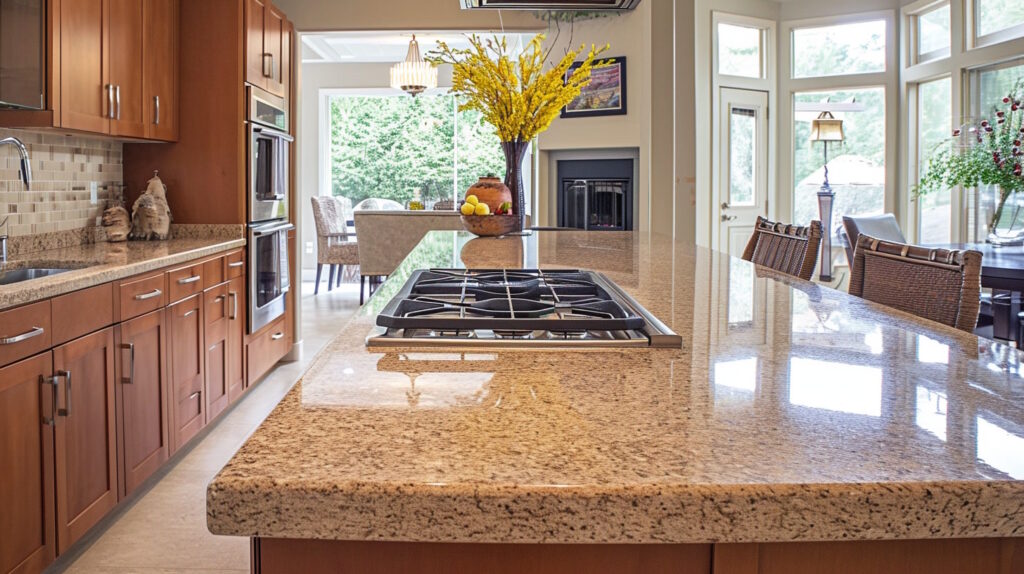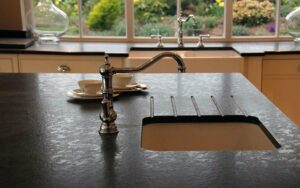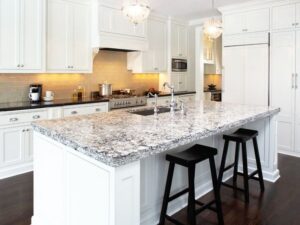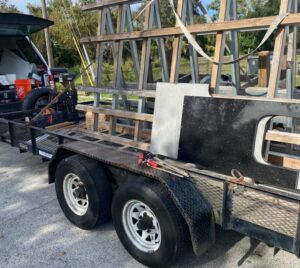Embarking on a stone installation project can be an exciting yet daunting task, especially when it comes to budgeting. Stone, with its timeless elegance and durability, can transform the look and feel of any space, be it a home, office, or public area. However, the financial aspect of stone installation is often a hurdle for many. Balancing the desire for high-quality materials and craftsmanship with a budget can feel like walking a tightrope.
In this comprehensive guide, we delve into the world of stone installation, providing you with valuable insights and practical advice to navigate the financial planning of your project. Whether you’re considering a luxurious marble entryway, a cozy granite kitchen countertop, or an outdoor limestone patio, understanding the costs involved is crucial. We’ll explore various types of stones, their price ranges, and what factors influence the overall cost of installation.
Our focus will not just be on finding the cheapest options; quality and aesthetics play a significant role in stone installation. We’ll demonstrate how to balance these elements with your budget, ensuring you don’t compromise on the final look and feel of your project. From selecting the right materials to understanding labor costs and uncovering hidden expenses, our goal is to equip you with knowledge and strategies to make informed decisions.
Moreover, this guide will touch upon cost-saving tips and tricks, including DIY options, negotiating with suppliers, and utilizing technology for accurate budgeting. We’ll also shed light on common pitfalls in budgeting for stone installation and how to avoid them.
So, whether you’re a first-time renovator, a seasoned builder, or simply curious about the process, this article will provide a roadmap to help you confidently plan and execute your stone installation project, ensuring it meets both your aesthetic desires and financial constraints. Let’s embark on this journey to transform your space with the beauty of stone, all while keeping your budget in check.
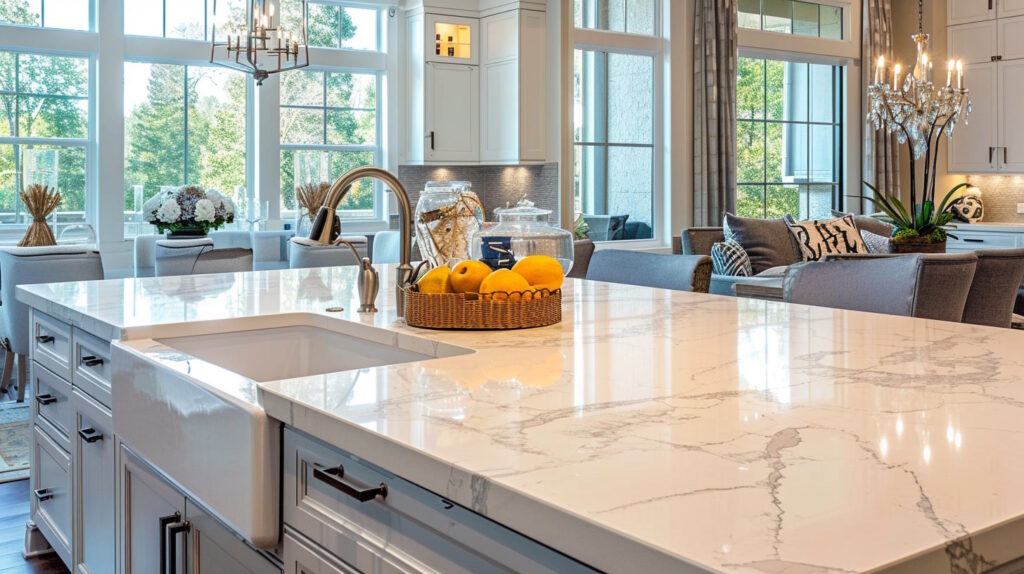
Understanding the Basics of Stone Installation
Types of Stone for Installation
When it comes to stone installation, the variety of choices can be overwhelming. Each type of stone has its unique charm and characteristics, influencing not only the look and feel of your space but also the cost of the project. Commonly used stones include:
- Granite: Known for its durability and resistance to scratches and heat, granite is a popular choice for kitchens and bathrooms. Its cost varies depending on color and pattern rarity.
- Marble: Synonymous with luxury, marble adds a classic elegance to any space. It is softer than granite and requires more maintenance, impacting long-term costs.
- Limestone: Ideal for a natural, rustic look, limestone is commonly used in outdoor spaces. It’s generally less expensive than granite or marble but requires sealing to prevent stains.
- Slate: With its unique texture and color variation, slate is a good option for both indoor and outdoor applications. It’s durable and offers a more budget-friendly alternative to other stones.
- Travertine: Travertine offers a distinct look with its pitted surface, commonly filled and smoothed. It’s a form of limestone and is moderately priced, falling between marble and granite.
Factors Influencing the Cost of Stone Installation
The cost of stone installation is influenced by several key factors:
- Material Quality: The quality of the stone, including its color, purity, and rarity, can significantly affect the price. Exotic stones are usually more expensive.
- Project Complexity: The complexity of the installation, like the need for custom cuts or intricate patterns, can drive up labor costs.
- Geographic Location: The cost of materials and labor can vary greatly depending on your location. Areas with higher living costs tend to have higher installation costs.
- Labor Skill Level: The expertise and experience of the laborers play a vital role. Skilled professionals might charge more, but their expertise can lead to better quality and more durable installation.
- Transportation and Handling: The cost of transporting and handling heavy stone materials, especially if imported, can add to the overall budget.
- Size of the Project: Larger projects require more materials and labor, increasing the total cost.
Understanding these basics is crucial in planning a stone installation project. It sets a realistic foundation for budgeting, helping you make informed decisions about the type of stone and the scale of your project. With this knowledge, you’re better equipped to embark on your stone installation journey, balancing beauty with budget.
Choosing Cost-Effective Stone Materials
Selecting the right stone material is a critical decision in any stone installation project. It’s not just about picking the most affordable option; it’s about finding the best value for your money without compromising on aesthetics or durability. Here’s how to navigate this choice:
Comparing Different Stone Materials
To make an informed decision, it’s essential to compare various stone materials based on a few key aspects:
- Price: Understand the price range of each stone type. For instance, while marble is typically on the higher end of the spectrum, materials like travertine and slate may offer a more economical alternative.
- Durability: Consider the longevity and maintenance requirements. Granite, known for its hardness, might offer better long-term value compared to softer stones like limestone.
- Appearance: Each stone has unique visual qualities. The choice should align with the desired aesthetic of your project. For example, if you’re looking for something with a luxurious feel, marble might be the right choice, despite its higher cost.
- Application: Certain stones are more suitable for specific applications. For example, slate’s slip resistance makes it ideal for outdoor use.
Balancing Cost and Aesthetics
Finding the middle ground between cost and aesthetics involves a few strategies:
- Mix and Match: Sometimes, using a combination of materials can balance cost without compromising on design. For instance, using a high-end stone like marble for focal points and a more budget-friendly stone like granite for larger areas can reduce costs.
- Opt for Lesser-Known Brands or Varieties: Lesser-known types of the same stone can be significantly cheaper than their popular counterparts. For example, choosing a less common granite color can offer the same durability at a lower price.
- Consider Tile Over Slab: Stone tiles tend to be less expensive than slabs. While they might not offer the same seamless look, they can significantly reduce costs.
- Look for Remnants: For smaller projects, remnants from larger slabs can be a cost-effective option. These pieces are sold at a fraction of the original price.
In summary, choosing cost-effective stone materials requires a balance of several factors. It’s about understanding the spectrum of options available, considering both the upfront and long-term costs, and creatively working with materials to achieve the desired aesthetic. With careful consideration and a bit of creativity, you can select a stone that meets both your design aspirations and budget constraints.
Reducing Waste and Saving Money
Minimizing waste not only benefits the environment but also significantly reduces the overall cost of a stone installation project. Here’s how you can reduce waste and save money:
Efficient Use of Materials
Efficient material usage is key to minimizing waste:
- Accurate Measurements: Ensure precise measurements before ordering stone. This reduces the risk of excess material that goes unused.
- Expert Cutting and Fitting: Professional stone cutters can maximize the use of each slab or tile, reducing offcuts and waste.
- Utilize Offcuts: Small pieces or offcuts can be creatively used for borders, accents, or smaller areas, ensuring almost every piece of material is utilized.
- Plan Layouts: Plan the layout in advance, especially for patterned stones, to minimize cuts and wastage.
Recycling and Reusing Stone
Stone is a recyclable material, and reusing it can offer both environmental and cost benefits:
- Reusing Leftover Stone: Leftover stone from a project can be repurposed for other home improvement projects, like garden pathways or as decorative elements.
- Buying Recycled Stone: Consider purchasing recycled stone materials. These are often sold at a lower cost and can provide a unique aesthetic to your project.
- Donate Unused Stone: If you have leftover stone that can’t be used, consider donating it to local builders or community projects. This not only clears out space but also supports sustainable practices.
Implementing these strategies not only helps in reducing waste but also ensures a more cost-effective and environmentally friendly approach to your stone installation project. By carefully planning and making smart choices, you can save money and contribute to sustainability efforts.
Creative Design Choices That Reduce Costs
When it comes to stone installation, the vision of your project doesn’t have to be compromised by a tight budget. With a sprinkle of ingenuity and strategic design choices, you can create a stunning result that also aligns with your financial parameters. Here are some effective ways to make creative design choices that help reduce the overall cost of your stone installation project.
- Mix and Match Materials:
Incorporate a combination of high-end stones with more affordable alternatives. Consider using the expensive stone as an accent, surrounded by less costly materials that complement it. This approach allows you to feature a luxurious stone without the need to use it extensively, thereby reducing costs. - Opt for Simpler Designs:
Complex patterns and intricate designs require more time and labor, which can significantly increase costs. Straightforward patterns or larger tile sizes can minimize the amount of cutting and fitting, saving both materials and labor expenses. Moreover, a minimalist aesthetic is not only cost-effective but also timeless in appeal. - Embrace Natural Imperfections:
Rather than exclusively seeking out premium, flawless stone options, consider the charm of stones with natural imperfections or varied patterns. These unique pieces often come at a reduced price and can add distinct character and texture to your installation. - Repurpose and Reuse:
If you’re remodeling, look into repurposing existing stone materials. For instance, an old stone countertop could potentially be cut and finished for use in a bathroom or as a statement backsplash in the kitchen. Creatively reusing materials not only adds a story to your project but also drastically cuts down on costs. - Consider Remnants:
Stone suppliers often have remnants from previous jobs that they sell at a discount. These pieces can be ideal for smaller areas such as vanities, hearths, or accent areas. Be open to adapting your design to the sizes and shapes that are available as remnants to capture significant savings. - Balance High and Low:
Allocate the bulk of your budget to focal areas where stone’s impact will be most appreciated, like a kitchen island or an entryway floor. Then, in less critical areas, you can opt for lower-cost options such as ceramic tiles that mimic stone or quality stone-look laminates. - Favor Standard Edges:
Custom edging on stone countertops or tiles can add to labor and material costs. Stick to standard edge profiles which are often included in the base price or come with a minimal upcharge, as opposed to more elaborate custom edges. - Go Thin:
Thinner slabs of stone not only cost less, but they also require a lighter support structure and can be easier to handle and install, reducing labor costs. Advances in stone reinforcement and installation techniques have made it possible to use thinner slabs without compromising on durability and the grandeur effect of the stone.
By incorporating these cost-effective design choices into your project, you can achieve a look that exudes luxury and elegance, while maintaining your budget. Keeping an open mind to various creative solutions will ensure that you don’t have to forgo the aesthetic and quality you desire for your stone installation.
Common Pitfalls to Avoid in Budgeting
When budgeting for a stone installation project, careful planning can make the difference between a successful endeavor and a financial misstep. To keep your project on track and within budget, be wary of the following common pitfalls that could hinder your financial planning.
- Underestimating Costs:
One of the most frequent mistakes is not accounting for all potential expenses. Ensure that you include not just the raw material costs, but also delivery fees, installation labor, sealant, maintenance products, and any equipment rentals. A buffer of 10-20% should also be added to your budget for unexpected costs that may arise. - Overlooking Labor Costs:
Labor can often equate to a substantial portion of the total project cost. Don’t just focus on the price of the stone; accurate quotes from contractors on installation time and labor costs are essential. Additionally, skilled craftsmen may charge more, but the quality of their work can save you money in the long run by avoiding repairs or adjustments. - Sacrificing Quality for Price:
While being budget-conscious is important, opting for cheapest materials or labor can lead to subpar results and higher costs down the line. Invest in quality where it counts, ensuring that your project stands the test of time and doesn’t incur additional expenses for premature repairs or replacements. - Failing to Research:
Neglect to compare prices and services between suppliers and contractors can be a costly error. Spend time researching, requesting multiple quotes, and checking reviews. Knowledge is power and can lead to significant savings and better quality selections. - Ignoring Maintenance Costs:
When selecting your stone, think ahead to maintenance requirements and costs. Some stones may require regular sealing or specific cleaning products to maintain their appearance. Factor these long-term costs into your budget to avoid surprises. - Misjudging Scale and Waste:
Measurement mistakes can result in ordering too little or too much material. Order the correct amount of stone by confirming measurements and account for waste due to cutting and fitting, which is typically around 10-15% extra. - Disregarding Project Timing:
Timing can significantly affect costs. If you’re flexible with your project schedule, consider planning your installation during off-peak seasons when contractors might offer lower rates. Conversely, rushing a job may increase costs due to expedited shipping and overtime labor charges. - Not Clarifying the Scope of Work:
A significant pitfall is assuming certain tasks are included in the quoted work without confirmation. Clarify what your contractor’s quote includes, such as site preparation and clean-up. Omissions can lead to additional unplanned expenses.
By avoiding these common budgeting mistakes, you protect yourself from unexpected overruns and ensure your project remains affordable. A detailed and well-researched budget is your blueprint for a successful stone installation that achieves your aesthetic goals without financial strain.
Frequently Asked Questions
When planning for a stone installation project, you may have a variety of questions about the process, costs, materials, and more. Here are some frequently asked questions to help you stay informed and prepared.
Q: How much should I budget for a stone installation project?
A: The cost of a stone installation project varies greatly depending on the size of the area, the type of stone selected, the complexity of the installation, and regional labor rates. As a starting point, obtain quotes from several suppliers and contractors to get an idea of materials and labor costs. Then, add a financial cushion of 10-20% for any unforeseen expenses.
Q: Which types of stone can be more budget-friendly?
A: Budget-friendly stone options include travertine, slate, and some types of granite and marble. Engineered stone, such as quartz, can also be cost-effective due to its durability and low maintenance requirements. Consider local stone, as it usually costs less due to lower transportation fees.
Q: Can I install the stone myself to save on labor costs?
A: While DIY installation can save on labor costs, it’s important to assess your skill level and the complexity of the project. Stone installation requires specific tools and techniques to ensure it is done correctly. Mistakes can be costly and may end up requiring professional remediation. For simple projects, like a small backsplash, DIY can be feasible with proper research and preparation.
Q: Is it cheaper to buy stone in bulk?
A: Purchasing stone in bulk often leads to a lower cost per unit, especially for large projects. However, consider storage and waste management for excess material. Sometimes, the savings are offset by the costs of dealing with leftover stone.
Q: How does stone finish affect the cost?
A: Different finishes—polished, honed, flamed, etc.—can affect the cost of the stone. Polished finishes are generally common and may not carry a premium, but more specialized finishes that require additional processing can be pricier. Always inquire about the cost differences between finishes when selecting your stone.
Q: What maintenance costs should I expect after stone installation?
A: Ongoing maintenance costs can include sealing, cleaning, and possible repair work. Some stones require annual sealing, while others may require it less frequently. Factor in the cost of sealants, specialty cleaners, and any professional maintenance services when budgeting.
Q: Are there any hidden costs I should be aware of in stone installation?
A: Potential hidden costs can include underlayment, backing materials, adhesives, grout, delivery fees, and installation supplies. Always ask suppliers and contractors for an itemized list of expenses and what their quotes include to avoid surprises.
Q: How can I ensure that I’m choosing the right contractor for the job?
A: To choose the right contractor, look for someone with specific experience in the type of stone installation you need. Check for references, reviews, and a portfolio of past projects. It’s also important to verify licenses, insurance, and any warranties or guarantees offered on their work.
Conclusion
To successfully budget for a stone installation project, you need thorough planning, attention to detail, and a proactive approach to managing costs. By making creative design choices to save money, avoiding common budgeting mistakes, and staying informed with frequently asked questions, you can install your stone with financial savvy and style.
Remember to prioritize quality over short-term savings to ensure longevity and satisfaction with the final outcome. For a successful stone installation that adds value to your space without exceeding your budget, it is important to find the right balance between cost, aesthetic appeal, and durability.
Keep talking to suppliers and contractors who know what they’re doing. Ask for different quotes and don’t be afraid to bargain for the best deal. Make sure every part of your project, from choosing materials to maintenance after installation, fits your budget.
This guide will help you make informed decisions for your stone installation project. Having a well-thought-out plan can make your dream of transforming a space into a beautiful reality. You’ll feel accomplished and satisfied with a job well done.

